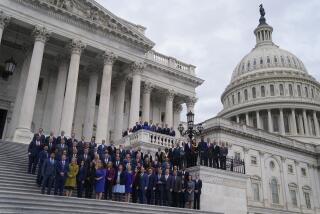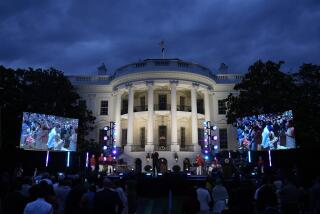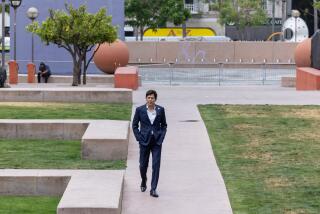Martin Luther King Jr. Memorial joins an evolving National Mall
After years of public squabbling over how many memorials is too many, a 7-acre homage to World War II was plunked in the middle of the National Mall in 2004. Congress then declared the cherished space known as America’s Front Yard an “essentially finished work of art.”
In other words, no more building.
Even so, a memorial to the Rev. Martin Luther King Jr. will open this month on 4 acres near the Tidal Basin where the cherry blossoms bloom. As well as a tribute to the slain civil rights leader, it is evidence that the mall, like America’s story, is a work in progress that might never be “finished.”
D.C.’s Martin Luther King Jr. Memorial
“To say the mall is complete strikes us as essentially saying American history has come to a screeching halt, and no one believes that,” said Judy Scott Feldman, chairwoman of the Maryland-based National Coalition to Save Our Mall.
The King Memorial is scheduled to open Aug. 28, the anniversary of his 1963 “I Have a Dream” speech. The dedication, which will cap a five-day celebration, could draw as many as 400,000 people — nearly twice the number who took part in the 1963 March on Washington.
It also marks another chapter in a debate that has simmered for decades over the dangers of overdeveloping the National Mall, designed by Pierre L’Enfant in 1791 as a geographic embodiment of the Constitution.
Its great cross axis stretches east to west from the U.S. Capitol to the Lincoln Memorial, and north to south from the White House to the Jefferson Memorial. Its grand promenade is where millions gather to celebrate, mourn, protest and learn.
The tribute to King brings to nine the number of major memorials on the National Mall (though the obelisk that honors George Washington is technically a monument). Nearly half were built within the last 16 years — lightning speed for a 220-year-old landmark.
Building on the mall requires an act of Congress, and approval takes years. But critics believe decisions regarding the mall — like so much else in Washington — are driven more by politics and personal interest than an overriding vision for the greater public good.
“The early main monuments were anticipated in a plan with a symbolic logic. The recent ones have just been plopped where Congress and the regulatory agencies see empty space,” Feldman said.
Her group supports putting further additions along the nearby banks of the Potomac River, and preserving the famous vista. “Our history goes on. Why not expand the mall so we can keep telling more of our American story?” she said.
The National Mall was not always so central to America’s civic life. Envisioned as a grand park in 1791, it was still a cow pasture by the mid-1880s. Ugly boxlike buildings covered the lawns during two world wars. President Nixon had the last of them removed.
The mall achieved a sense of magnificence nevertheless, honoring the men and ideas that shaped the country. The Washington Monument was dedicated in 1885, the Lincoln Memorial in 1922. The District of Columbia War Memorial, never very famous, appeared in 1931, and the Jefferson Memorial in 1943.
For nearly 40 years, monument building hit a lull. After a cleanup effort for the nation’s bicentennial, Congress decided there was room for more. In 1982, the Vietnam Veterans Memorial — a simple yet enormously popular wall of polished stone — went in.
“After that,” Feldman said, “all hell broke loose.”
Some called what followed “memorial fever”: one to the Korean War in 1995, another to Franklin Delano Roosevelt in 1997, a third to World War II in 2004 and now one to King — each of them a space-gobbling landscape.
The result: Congress’ self-imposed moratorium proved unexpectedly pliable, and the historic open space is going fast.
“There are noble thoughts on either side of the debate,” said Cynthia R. Field, coauthor of “The National Mall: Rethinking Washington’s Monumental Core.” “The mall is a place designed for the people. But more people mean more toilets, more cafes, more signage and buses. It’s a tricky balance,” she said.
The $120-million King Memorial will be the only one on the mall that doesn’t honor a president or a war. Each visitor will enter through a split boulder called the Mountain of Despair and onto an open plaza, much as King’s life moved through a monolithic struggle toward freedom. An inscription wall captures his legacy with quotes etched in granite; a 30-foot sculpture captures his image, arms crossed.
Every detail is symbolic. Even the address — 1964 Independence Ave. — is a reference to the year the landmark Civil Rights Act was passed. It forms a straight line of sight between the memorials to Lincoln, the emancipator, and Jefferson, the primary author of the Declaration of Independence.
This month, LaVette Smith, 50, of Philadelphia visited the mall with her husband and three young sons. The King Memorial was still wrapped in chain link and construction tape. She planned to return for the unveiling.
Overbuilding is a danger, she agreed, but like several other people there on a recent Sunday, she couldn’t pick a memorial she would have excluded.
“Every creed and culture has made a contribution to what we have become as a nation,” said Smith, an African American. “I can bring my children to Dr. King’s memorial and say, ‘Here is our part, our contribution.’ ”
Photos: Martin Luther King Jr. Memorial in Washington, D.C.
More to Read
Sign up for Essential California
The most important California stories and recommendations in your inbox every morning.
You may occasionally receive promotional content from the Los Angeles Times.










